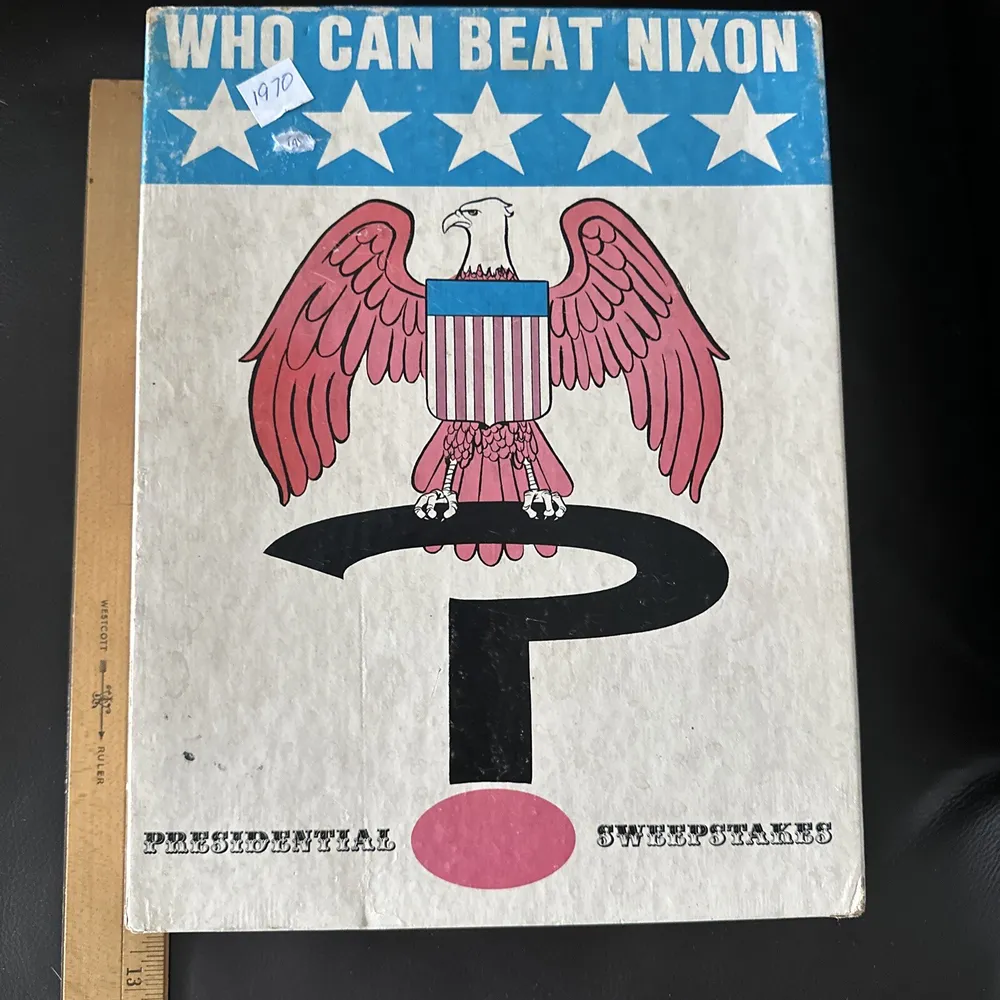Who Can Beat Nixon? (1970)
Who Can Beat Nixon?
“Who Can Beat Nixon?” is a board game published in 1970 that simulates the upcoming 1972 United States presidential election. The game has gained popularity due to its unique theme and engaging gameplay. Here is a Brief History and Background Information of Who Can Beat Nixon? about the game:
Publisher:
The game was published in 1970 by Harrison-Blain of N.J.
Designer:
The game was developed immediately after Nixon’s first election, and it seems that the designer wanted to prevent him from getting a second term.
Gameplay:
The game is a two-player tug of war, where one player takes on the role of the Nixon administration, and the other plays as the Washington Press. The goal of the Washington Press is to connect two witnesses by a chain of evidence to Nixon, while the Nixon player aims to build enough momentum to stay in office before that happens.
Gameplay Mechanics of Who Can Beat Nixon?:
The game uses a card-driven tug of war style mechanic, where players play cards to place witness markers on the board and collect evidence tokens. The editor places evidence face up, trying to create a connected path of evidence tokens between two face-up witnesses and Nixon, while the Nixon player places evidence tokens face down to stop the editor from connecting witnesses.
Game Objective of Who Can Beat Nixon?:
The game is won when the journalist connects at least two of the picture tiles on the board’s perimeter to the center picture of Nixon, or when Nixon successfully collects five red momentum tokens.
Game Components of Who Can Beat Nixon?
How To Setup Who Can Beat Nixon?
To set up the game, players need to place the game board in the middle of the playing area, distribute the game pieces among the players, and ensure each player has the necessary tokens and dice. The exact setup instructions may vary, but generally, it involves preparing the board and distributing the pieces evenly.
Gameplay Mechanics and Game Objective
Player Experience
Playing **Who Can Beat Nixon?** offers a blend of strategy and luck, as players navigate the complexities of a presidential campaign. The game provides a unique historical context, reflecting the political climate of the early 1970s. Players need to balance their movement and decision-making to outmaneuver their opponents and secure the necessary electoral votes.
Pros
Cons
Personal Thoughts on Who Can Beat Nixon?
**Who Can Beat Nixon?** is ideal for collectors of vintage board games, history enthusiasts, and those interested in the political landscape of the 1970s. It offers a nostalgic and educational experience, though it may not be as engaging for players seeking more contemporary game mechanics. This game is a unique piece of historical entertainment that can spark interesting discussions and reflections on past political events.
We are supported by our audience. When you purchase through links on our site, we may earn an affiliate commission, at no extra cost for you. Learn more.

